The impact of electromobility on logistics and the business ecosystem is explored. Aiming to analyze scientific literature indexed in Scopus related to these topics, employing methods such as classical literature review and systematic literature review combined with bibliometric analysis. The significance of a collaborative business ecosystem, infrastructure, and logistics in the success of electromobility, highlighting their potential to drive economic growth and create green jobs in the energy and transport sectors emphasized. Studies underscore the need for a sustainable and balanced approach, integrating technological advancements with a robust business ecosystem for the future of electromobility.
- business ecosystem
- electromobility logistics
- electric transport
- e-mobility
- logistics
1. Introduction
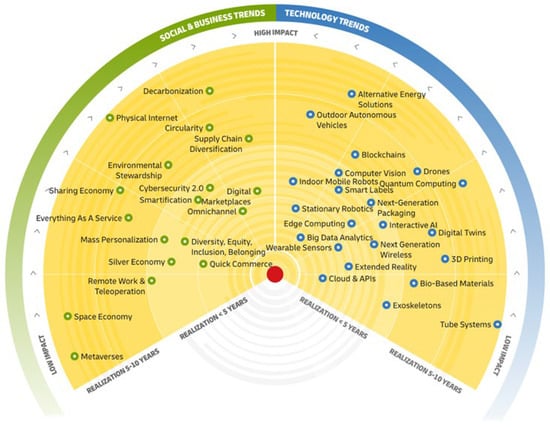
2. Logistics and Business Ecosystem of Electromobility
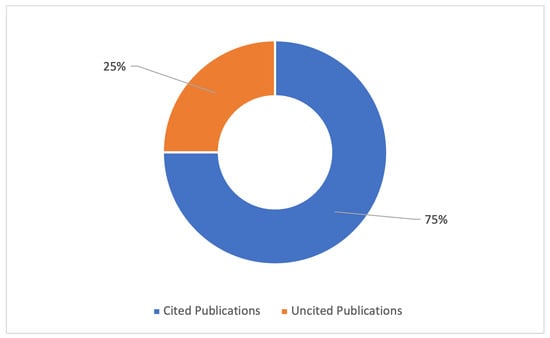

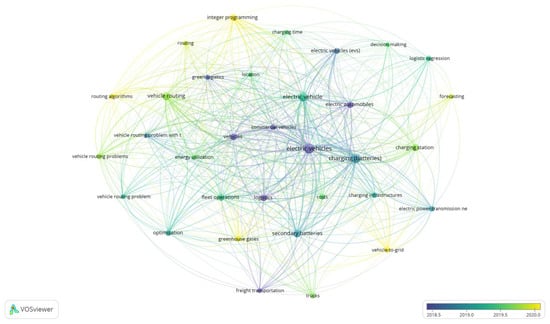
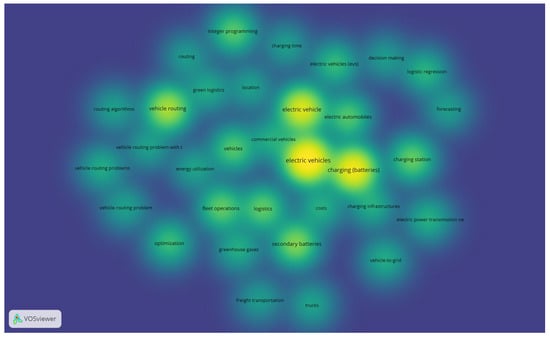
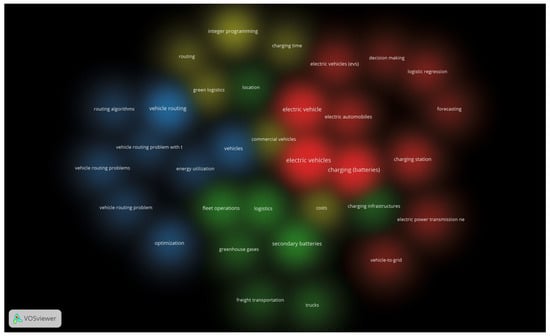
This entry is adapted from the peer-reviewed paper 10.3390/en16217249
References
- Klimecka-Tatar, D.; Ingaldi, M.; Obrecht, M. Sustainable Developement in Logistic—A Strategy for Management in Terms of Green Transport. Manag. Syst. Prod. Eng. 2021, 29, 91–96.
- Siuta-Tokarska, B.; Kruk, S.; Krzemiński, P.; Thier, A.; Żmija, K. Digitalisation of Enterprises in the Energy Sector: Drivers—Business Models—Prospective Directions of Changes. Energies 2022, 15, 8962.
- Marciszewska, E.; Zagrajek, P.; Hoszman, A. Future of Air Cargo in Poland. In Springer Proceedings in Business and Economics; Suchanek, M., Ed.; Springer Science and Business Media B.V.: Berlin/Heidelberg, Germany, 2021; pp. 101–110. ISBN 978-303050009-2.
- Łuszczyk, M.; Sulich, A.; Siuta-Tokarska, B.; Zema, T.; Thier, A. The Development of Electromobility in the European Union: Evidence from Poland and Cross-Country Comparisons. Energies 2021, 14, 8247.
- Amoah, A.; Marimon, F. Project managers as knowledge workers: Competencies for effective project management in developing countries. Adm. Sci. 2021, 11, 131.
- Zhang, M.; Wei, X.; Xu, A. Impact of investment in quality language education on green economic growth: Case study of 23 Chinese provinces. Humanit. Soc. Sci. Commun. 2023, 10, 452.
- Kwilinski, A.; Vyshnevskyi, O.; Dzwigol, H. Digitalization of the EU Economies and People at Risk of Poverty or Social Exclusion. J. Risk Financ. Manag. 2020, 13, 142.
- Sulich, A.; Sołoducho-Pelc, L. The European Green Deal in the EU Energy Sector. In Proceedings of the 6th International Conference on European Integration 2022, Ostrava, Czechia, 18–20 May 2022; Stanickova, M., Melecky, L., Eds.; VSB—Technical University of Ostrava: Ostrava, Czechia, 2022; pp. 674–681.
- Kozar, Ł.J.; Sulich, A. Green Jobs: Bibliometric Review. Int. J. Environ. Res. Public Health 2023, 20, 2886.
- Kozar, Ł.J.; Sulich, A. Green Jobs in the Energy Sector. Energies 2023, 16, 3171.
- Ardebili, A.A.; Padoano, E.; Longo, A.; Ficarella, A. The Risky-Opportunity Analysis Method (ROAM) to Support Risk-Based Decisions in a Case-Study of Critical Infrastructure Digitization. Risks 2022, 10, 48.
- Surówka, M.; Popławski, Ł.; Fidlerová, H. Technical infrastructure as an element of sustainable development of rural regions in małopolskie voivodeship in poland and trnava region in Slovakia. Agriculture 2021, 11, 141.
- Liu, S.; Zhang, X.; Ma, L.; He, L.; Zhang, S.; Cheng, M. Data quality evaluation and calibration of on-road remote sensing systems based on exhaust plumes. J. Environ. Sci. 2023, 123, 317–326.
- Kluczek, A.; Gladysz, B.; Buczacki, A.; Krystosiak, K.; Ejsmont, K.; Palmer, E. Aligning sustainable development goals with Industry 4.0 for the design of business model for printing and packaging companies. Packag. Technol. Sci. 2023, 36, 307–325.
- Volchik, V.; Maslyukova, E.; Strielkowski, W. Perception of Scientific and Social Values in the Sustainable Development of National Innovation Systems. Soc. Sci. 2023, 12, 215.
- Zielińska, A. A comparative analysis of reverse logistics implementation for waste management in Poland and other European Union countries. J. Int. Stud. 2020, 13, 171–183.
- Kasztelan, A. On the Road to a Green Economy: How Do European Union Countries ‘Do Their Homework’? Energies 2021, 14, 5941.
- Myszczyszyn, J.; Suproń, B. Relationship among economic growth (GDP), energy consumption and carbon dioxide emission: Evidence from V4 countries. Energies 2021, 14, 7734.
- Sztafrowski, D.; Kaznowski, R. Problemy infrastrukturalne związane z funkcjonowaniem stacji ładowania pojazdów elektrycznych przy drodze o dużym natężeniu ruchu . Przegląd Elektrotechniczny 2022, 1, 116–118.
- Chamier-Gliszczynski, N.; Trzmiel, G.; Jajczyk, J.; Juszczak, A.; Woźniak, W.; Wasiak, M.; Wojtachnik, R.; Santarek, K. The Influence of Distributed Generation on the Operation of the Power System, Based on the Example of PV Micro-Installations. Energies 2023, 16, 1267.
- Grandi, C.; Lancia, A.; D’Ovidio, M.C. Climate Change: An Issue That Should Be Part of Workers’ Information and Training Duties Envisaged by EU Directives on Occupational Health and Safety. Atmosphere 2023, 14, 1183.
- Ur Rehman, F.; Sein, Y.Y.; Dmytrenko, D. Translating the Impact of Internal and External Factors in Achieving the Sustainable Market Competitiveness: The Mediating Role of Management Practices. J. Compet. 2023, 15, 1–20.
- Sus, A.; Organa, M.; Hołub-Iwan, J. Effectiveness of Network Relations in Poland during the Economic Crisis Caused by COVID-19: Interorganizational Network Viewpoints. Int. J. Environ. Res. Public Health 2023, 20, 1178.
- Rudnik, K.; Hnydiuk-Stefan, A.; Li, Z.; Ma, Z. Short-term modeling of carbon price based on fuel and energy determinants in EU ETS. J. Clean. Prod. 2023, 417, 137970.
- Ma, X.; Bashir, H.; Ayub, A. Cultivating green workforce: The roles of green shared vision and green organizational identity. Front. Psychol. 2023, 14, 1041654.
- Corboș, R.-A.; Bunea, O.-I.; Jiroveanu, D.-C. The Effects of Strategic Procurement 4.0 Performance on Organizational Competitiveness in the Circular Economy. Logistics 2023, 7, 13.
- Yang, C.; Song, X. Assessing the determinants of renewable energy and energy efficiency on technological innovation: Role of human capital development and investement. Environ. Sci. Pollut. Res. 2023, 30, 39055–39075.
- Vallarta-Serrano, S.I.; Santoyo-Castelazo, E.; Santoyo, E.; García-Mandujano, E.O.; Vázquez-Sánchez, H. Integrated Sustainability Assessment Framework of Industry 4.0 from an Energy Systems Thinking Perspective: Bibliometric Analysis and Systematic Literature Review. Energies 2023, 16, 5440.
- Trzaska, R.; Sulich, A.; Organa, M.; Niemczyk, J.; Jasiński, B. Digitalization business strategies in energy sector: Solving problems with uncertainty under industry 4.0 conditions. Energies 2021, 14, 7997.
- Balawi, A.; Ayoub, A. How can companies pursue better strategies through innovation? A Review of various perspectives on innovation, competitiveness, and technology. Int. J. Oper. Quant. Manag. 2022, 28, 280–294.
- Hailiang, Z.; Chau, K.Y.; Waqas, M. Does green finance and renewable energy promote tourism for sustainable development: Empirical evidence from China. Renew. Energy 2023, 207, 660–671.
- Zema, T.; Sulich, A.; Grzesiak, S. Charging Stations and Electromobility Development: A Cross-Country Comparative Analysis. Energies 2023, 16, 32.
- Bórawski, P.; Bełdycka-Bórawska, A.; Holden, L.; Rokicki, T. The Role of Renewable Energy Sources in Electricity Production in Poland and the Background of Energy Policy of the European Union at the Beginning of the COVID-19 Crisis. Energies 2022, 15, 8771.
- Di Caprio, D.; Santos-Arteaga, F.J. Uncertain interval TOPSIS and potentially regrettable decisions within ICT evaluation environments. Appl. Soft Comput. 2023, 142, 110301.
- Bajan, B.; Łukasiewicz, J.; Mrówczyńska-Kamińska, A. Energy consumption and its structures in food production systems of the visegrad group countries compared with eu-15 countries. Energies 2021, 14, 3945.
- Medvedeva, Y.Y.; Luchaninov, R.S.; Poluyanova, N.V.; Semenova, S.V.; Alekseeva, E.A. The Stakeholders’ Role in the Corporate Strategy Creation for the Sustainable Development of Russian Industrial Enterprises. Economies 2022, 10, 116.
- Sulich, A.; Sołoducho-Pelc, L. Changes in Energy Sector Strategies: A Literature Review. Energies 2022, 15, 7068.
- Lyulyov, O.; Pimonenko, T.; Kwilinski, A.; Dzwigol, H.; Dzwigol-Barosz, M.; Pavlyk, V.; Barosz, P. The impact of the government policy on the energy efficient gap: The evidence from Ukraine. Energies 2021, 14, 373.
- Grzesiak, S.; Sulich, A. Car Engines Comparative Analysis: Sustainable Approach. Energies 2022, 15, 5170.
- Korpysa, J.; Singh, U.S.; Singh, S. Validation of Decision Criteria and Determining Factors Importance in Advocating for Sustainability of Entrepreneurial Startups towards Social Inclusion and Capacity Building. Sustainability 2023, 15, 9938.
- Brożyna, J.; Strielkowski, W.; Zpěvák, A. Evaluating the Chances of Implementing the “Fit for 55” Green Transition Package in the V4 Countries. Energies 2023, 16, 2764.
- Gontarz, M.; Sulich, A. The Sustainable Transportation Solutions: Smart Shuttle Example. In Proceedings of the Vision 2025: Education Excellence and Management of Innovations through Sustainable Economic Competitive Advantage, Madrid, Spain, 13–14 November 2019; Soliman, K.S., Ed.; International Business Information Management Association: King of Prussia, PA, USA, 2019; pp. 10833–10840.
- Łuszczyk, M.; Malik, K.; Siuta-Tokarska, B.; Thier, A. Direction of Changes in the Settlements for Prosumers of Photovoltaic Micro-Installations: The Example of Poland as the Economy in Transition in the European Union. Energies 2023, 16, 3233.
- Wang, Y.; Liu, M.; Wang, S.; Cui, X.; Hao, L.; Gen, H. Assessing the impact of governance and health expenditures on carbon emissions in China: Role of environmental regulation. Front. Public Heal. 2022, 10, 949729.
- Silva, A.R.; Nuno Fidalgo, J.; Andrade, J.R. Easing Predictors Selection in Electricity Price Forecasting with Deep Learning Techniques. In Proceedings of the 2023 19th International Conference on the European Energy Market (EEM), Lappeenranta, Finland, 6–8 June 2023; IEEE: Piscataway, NJ, USA, 2023; Volume 2023, pp. 1–6.
- Balsalobre-Lorente, D.; Leitão, N.C.; Bekun, F.V. Fresh validation of the low carbon development hypothesis under the ekc scheme in portugal, italy, greece and spain. Energies 2021, 14, 250.
- Hajar, H.A.A.; Hajer, M.A.A. A Multi-dimension Sustainability Assessment of the Economic Growth in Jordan Using the Sustainability Window Analysis. J. Knowl. Econ. 2023.
- Nilashi, M.; Baabdullah, A.M.; Abumalloh, R.A.; Ooi, K.-B.; Tan, G.W.-H.; Giannakis, M.; Dwivedi, Y.K. How can big data and predictive analytics impact the performance and competitive advantage of the food waste and recycling industry? Ann. Oper. Res. 2023.
- Panychev, A.; Pokrovskaya, O. Business Transport Ecosystems in Transport Education: Specifics and Potential. Lect. Notes Networks Syst. 2022, 402 LNNS, 109–117.
- Couzineau-Zegwaard, E.; Meier, O.; Barabel, M. Business ecosystem model applied to the electric vehicle market. In Proceedings of the 26th Electric Vehicle Symposium 2012, Los Angeles, CA, USA, 6–9 May 2012; Volume 2, pp. 938–945.
- Bilgaev, A.; Sadykova, E.; Mikheeva, A.; Bardakhanova, T.; Ayusheeva, S.; Li, F.; Dong, S. Green Economy Development Progress in the Republic of Buryatia (Russia). Int. J. Environ. Res. Public Health 2022, 19, 7928.
- Kozlov, V.; Sałabun, W. Challenges in reliable solar panel selection using MCDA methods. Procedia Comput. Sci. 2021, 192, 4913–4923.
- Ma, S.-C.; Xu, J.-H.; Fan, Y. Characteristics and key trends of global electric vehicle technology development: A multi-method patent analysis. J. Clean. Prod. 2022, 338, 130502.
- Nobre, A.V.; Oliveira, C.C.R.; de Lucena Nunes, D.R.; Silva Melo, A.C.; Guimarães, G.E.; Anholon, R.; Martins, V.W.B. Analysis of Decision Parameters for Route Plans and Their Importance for Sustainability: An Exploratory Study Using the TOPSIS Technique. Logistics 2022, 6, 32.
- Pálvölgyi, T.; Nagypál, N.C.; Szlávik, J.; Csete, M.; Csáfor, H. Striking Oil? CSR and the EU Integration Processes: The Example of Hungary. In Corporate Social Responsibility in Europe; Edward Elgar Publishing: Cheltenham, UK, 2009; pp. 269–288.
- Calderón, R.; De Urbina, M.O.; Expósito, L. Follow the genuine leader: The “green imitation”. Bus. Ethics Environ. Responsib. 2023, 32, 570–581.
- Kuznetsova, S.; Markova, V. New Challenges in External Environment and Business Strategy: The Case of Siberian Companies. Eurasian Stud. Bus. Econ. 2017, 4, 449–461.
- Atter, G.B.; Leitner, M.; Ljubi, I. Location of Charging Stations in Electric Car Sharing Systems. Transp. Sci. 2020, 54, 1408–1438.
- Kłos-Adamkiewicz, Z.; Szaruga, E.; Gozdek, A.; Kogut-Jaworska, M. Links between the Energy Intensity of Public Urban Transport, Regional Economic Growth and Urbanisation: The Case of Poland. Energies 2023, 16, 3799.
- DHL—Global The Logistics Trend Radar, Delivering Insight Today, Creating Value Tomorrow. Available online: https://www.dhl.com/global-en/home/insights-and-innovation/insights/logistics-trend-radar.html (accessed on 7 April 2023).
- Gajdzik, B.; Grabowska, S.; Saniuk, S. Key socio-economic megatrends and trends in the context of the industry 4.0 framework. Forum Sci. Oeconomia 2021, 9, 5–21.
- Solesvik, M.Z.; Torgersen, M.; Andersson, G.; Valter, P. Green Business Models: Definitions, types, and life cycle analysis. Forum Sci. Oeconomia 2022, 10, 199–217.
- Mikiashvili, N.; Lobzhanidze, N. Green innovations and economic policy in small economies. Forum Sci. Oeconomia 2017, 5, 29–40.
- Brodacki, D.; Polaszczyk, J. Emissivity of the operation of electric cars in the context of the strategic goals of the development of electromobility in Poland and the Netherlands Emisyjność dwutlenku wȩgla przez samochody elektryczne w kontekście strategicznych celów rozwoju elektr. Polityka Energ. 2018, 21, 99–115.
- Aneesh, E.M.; Anoopkumar, A.N.; Madhavan, A.; Sindhu, R.; Binod, P.; Kuddus, M.; Ruiz, H.A.; Pandey, A.; Awasthi, M.K.; Show, P.L. Inferences on bioengineering perspectives and circular economy to tackle the emerging pollutants. Environ. Technol. Innov. 2023, 30, 103116.
- Winkelhaus, S.; Grosse, E.H. Logistics 4.0: A systematic review towards a new logistics system. Int. J. Prod. Res. 2020, 58, 18–43.
- Borgi, T.; Zoghlami, N.; Abed, M. Big data for transport and logistics: A review. In Proceedings of the 2017 International Conference on Advanced Systems and Electric Technologies (IC_ASET), Hammamet, Tunisia, 14–17 January 2017; IEEE: Piscataway, NJ, USA, 2017; pp. 44–49.
- Galinski, P. Determinants of debt for local governments in Europe-panel data research. Forum Sci. Oeconomia 2023, 11, 69–86.
- Bakator, M.; Cockalo, D.; Kavalić, M.; Terek Stojanović, E.; Gluvakov, V. An Application of Statistical Methods in Data Mining Techniques to Predict ICT Implementation of Enterprises. Appl. Sci. 2023, 13, 4055.
- Krishnan, V.V.; Koshy, B.I. Evaluating the factors influencing purchase intention of electric vehicles in households owning conventional vehicles. Case Stud. Transp. Policy 2021, 9, 1122–1129.
- Rovňák, M.; Kalistová, A.; Štofejová, L.; Benko, M.; Salabura, D. Management of Sustainable Mobility and the Perception of the Concept of Electric Vehicle Deployment . Polish J. Manag. Stud. 2022, 25, 266–281.
- Chen, C.-C.; Pao, H.-T. The causal link between circular economy and economic growth in EU-25. Environ. Sci. Pollut. Res. 2022, 29, 76352–76364.
- Wang, K. Logistics 4.0 Solution-New Challenges and Opportunities. In 6th International Workshop of Advanced Manufacturing and Automation; Atlantis Press: Amsterdam, The Netherlands, 2016; pp. 68–74.
